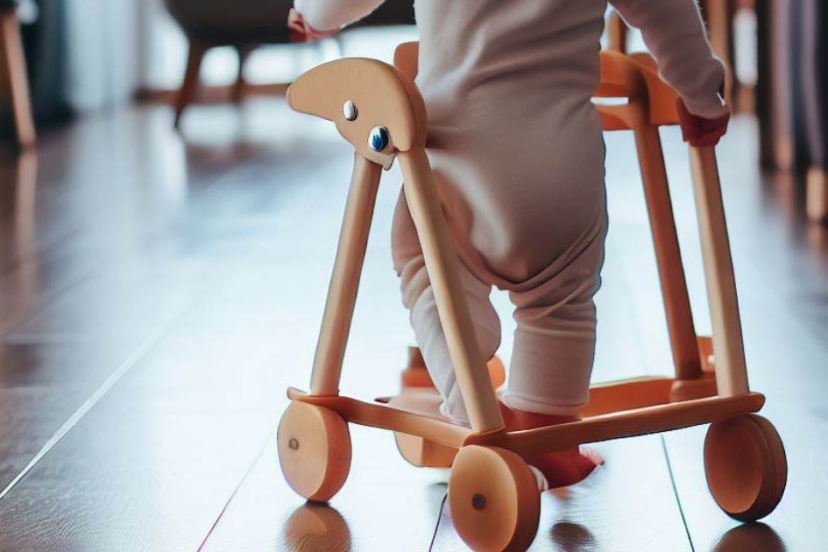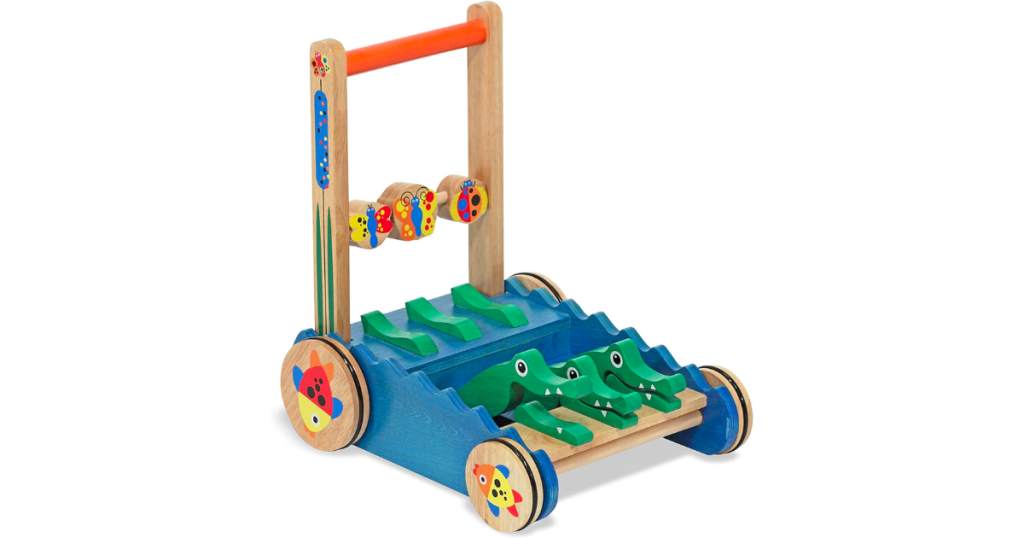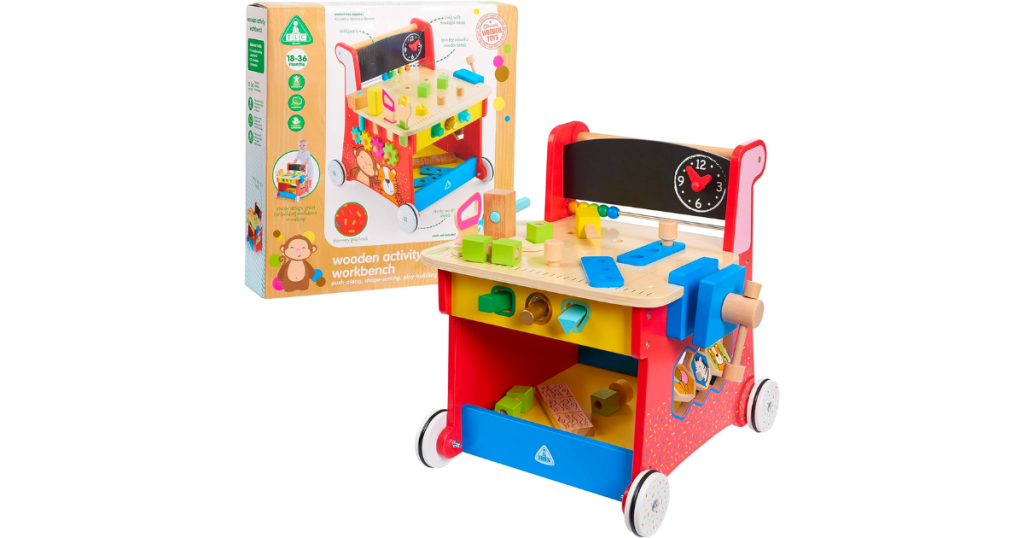Wooden Baby Walker: The Ultimate Guide for Choosing, Safety & Style
Advantages of Wooden Baby Walkers
- Durability and Longevity: Wooden walkers are known for their sturdiness and durability. They can withstand the wear and tear of active play, making them a long-lasting investment.
- Environmental Friendliness: If you’re conscious about the environment, wooden baby walkers are an excellent choice. They are typically made from sustainable materials, reducing the environmental impact.
- Safety Features: Wooden walkers often come with built-in safety features such as non-slip grips, smooth edges, and sturdy construction, ensuring your baby’s safety during their walking adventures.
Choosing the Right Wooden Baby Walker
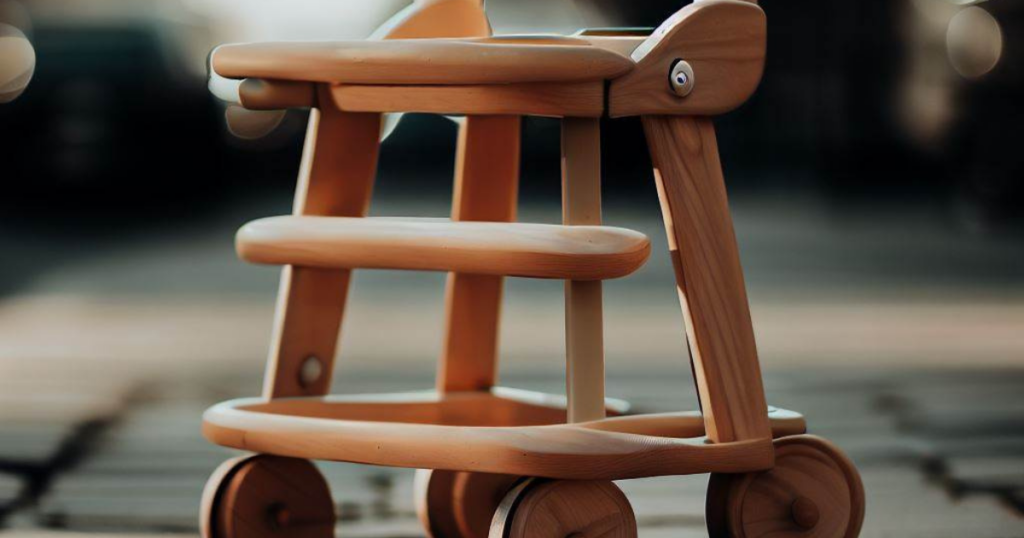
- Age and Developmental Stage: Take into account your baby’s age and developmental milestones. Choose a walker that is appropriate for their stage of development.
- Stability and Balance: Look for a walker with a wide base and a low center of gravity to provide stability and balance. This will give your baby the confidence to take their first steps.
- Features to Look For: Consider features such as adjustable heights, padded seats for comfort, and removable toys or activity trays to keep your baby engaged and entertained.
Safety Considerations for Wooden Baby Walkers
- Supervision and Hazard-Free Environment: Never leave your baby unattended in a walker, and ensure the surrounding environment is free from hazards such as stairs, pools, or sharp objects. Ensure you install the right safety gate.
- Appropriate Surfaces: Use the wooden walker on smooth and even surfaces. Avoid using it on stairs, uneven ground, or near potential dangers.
- Proper Fit and Adjustments: Ensure the walker is properly adjusted to your baby’s height and securely fastened to prevent accidents.
How to Use a Wooden Baby Walker
- Introduction: Introduce the walker gradually to your baby. Allow them to explore and get familiar with the walker in a safe and supervised environment.
- Encouragement and Support: Stand behind your baby, holding their hands gently, and encourage them to take steps while using the walker. Offer words of praise and support.
- Gradual Progression: As your baby becomes more comfortable, gradually decrease the amount of support you provide, allowing them to gain confidence and independence.
Styling and Personalization of Wooden Baby Walkers
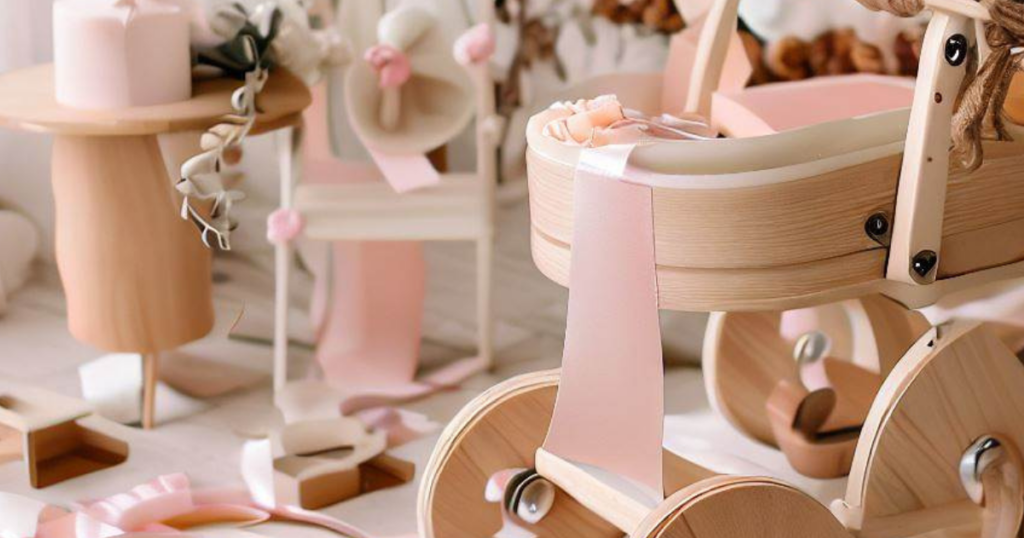
- Paint and Decorate: Consider painting the wooden frame of the walker with non-toxic, child-safe paint in vibrant colors or soft pastels. You can also add decorative patterns or designs that match your baby’s nursery theme.
- Attach Soft Cushions: Enhance the comfort of the walker by attaching soft cushions or padded fabric to the seat and backrest. Choose fabrics with fun patterns or prints that reflect your baby’s personality.
- Hang Toys and Accessories: Add a touch of playfulness by hanging colorful toys, rattles, or sensory accessories from the walker’s handle or frame. This not only entertains your baby but also adds visual appeal.
- Personalized Nameplate: Consider adding a personalized nameplate or engraving your baby’s name on the wooden frame. It adds a special touch and makes the walker uniquely theirs.
- Fabric Basket or Storage: Attach a fabric basket or storage compartment to the walker to hold your baby’s favorite toys or small essentials. Opt for fabrics that complement the overall aesthetic of the walker.
Recommended Products
Melissa & Doug Deluxe Chomp and Clack Alligator Push Toy and Activity Walker
1. Detailed Product Description:
The Melissa & Doug Chomp & Clack Alligator Push Toy is a wooden activity walker designed for babies aged 12 months and older.
Features three chomping alligators, fish on the wheels, and spinning butterfly and ladybug beads.
Sturdy construction and craftsmanship ensure safety for children, and it makes a gentle clacking noise when pushed.
2. Pros:
- High-quality construction and materials.
- Engaging activities promote gross and fine motor skills.
- Encourages hand-eye coordination.
- Makes a gentle clacking noise when in motion.
- Durable and well-made, providing a practical and fun way for babies to learn to walk.
- Provides stability for early walkers with rubberized wheels.
- Suitable for both hardwood floors and smooth surfaces.
3. Cons:
- The advertised “chomp and clack” noise from the alligators might be less pronounced than expected.
- The handle’s height is not adjustable, potentially causing issues for taller babies.
4. Reviews: What Parents who purchased are saying
- Sturdy, high quality, and engaging. The lack of noise from the alligators was not a drawback, and the toy helped the child learn to walk confidently.
- Sturdy and well-made, a great walker for a 1-year-old. Only downside is the need to turn it around occasionally.
- Easy to assemble, sustainable, and loved by the child. The rubberized wheels are floor-friendly, and it remains in use even as the child starts walking.
- Perfect for an 8-month-old, well-made with bright colors. Provides confidence and balance for early walkers.
- Impressive quality, easy assembly. The toy is stable, though shoes are recommended to avoid toe incidents.
- Boosts confidence in walking, stable and not overly noisy. Handles well on different surfaces, though paint on the handle may rub off.
- Sturdy for cruising, better suited for smooth floors than thick carpets. Concerns about finger pinching in the alligator’s mouth.
In summary, the Melissa & Doug Deluxe Chomp and Clack Alligator Push Toy receives positive reviews for its quality, stability, and contribution to early childhood development. Some minor concerns include the noise level and non-adjustable handle height.
Early Learning Centre Wooden Activity Workbench
1. Detailed Product Description:
- The Early Learning Centre Wooden Activity Workbench is a versatile playset designed for little builders, offering over 20 engaging accessories.
- Crafted from classic chunky wood, it includes four tools, a chalkboard, a clock with moveable hands, and more.
- This activity workbench aims to enhance physical development, hand-eye coordination, and imaginative play for children aged 12 months and up.
2. Pros:
- The workbench promotes physical development and balance, encouraging walking through push-along play.
- Features a shimmery gold finish, chalkboard for scribbling, colorful spinning beads, and a vice for interactive fun.
- Supports imaginative play, fostering creativity and language development.
- Chunky wood design with non-slip wheels adds durability and stability.
3. Cons:
- Some customers express concerns about the weight and tipping, suggesting the need for additional stability.
- Chalk is not included, and there are minor assembly considerations, requiring a Phillips screwdriver.
4. Reviews: What Parents who purchased are saying
- Perfect size for a pre-walker! Modern Montessori look, and it’s a great addition for those just starting to stand. Adorable and well-received.”
- Consideration for Assembly: While the blocks don’t align perfectly, there’s a thoughtful design element. Assembly requires some effort, but overall, it’s a sturdy and enjoyable wooden toy for my son
- Long-Lasting Enjoyment: My toddler loves his activity bench! A great investment for motor skills development, and the various activities keep him engaged. Sturdy and well-made.
- Surprising Quality: Better quality than expected. Easy to assemble, and the adjustable wheels are a nice touch. My daughter sits on it without issues. Impressed with its durability.
In summary, the Early Learning Centre Wooden Activity Workbench receives positive feedback for its engaging features, sturdiness, and contribution to children’s development. Some assembly considerations and stability concerns are noted, but overall, it offers great value for imaginative play and skill enhancement.
Conclusion
FAQs
1. Are wooden baby walkers safe for my child?
2. At what age can I introduce a wooden baby walker to my child?
3. Can wooden baby walkers damage my floors?
4. How long can my child use a wooden baby walker?
5. Are wooden baby walkers better than plastic ones?
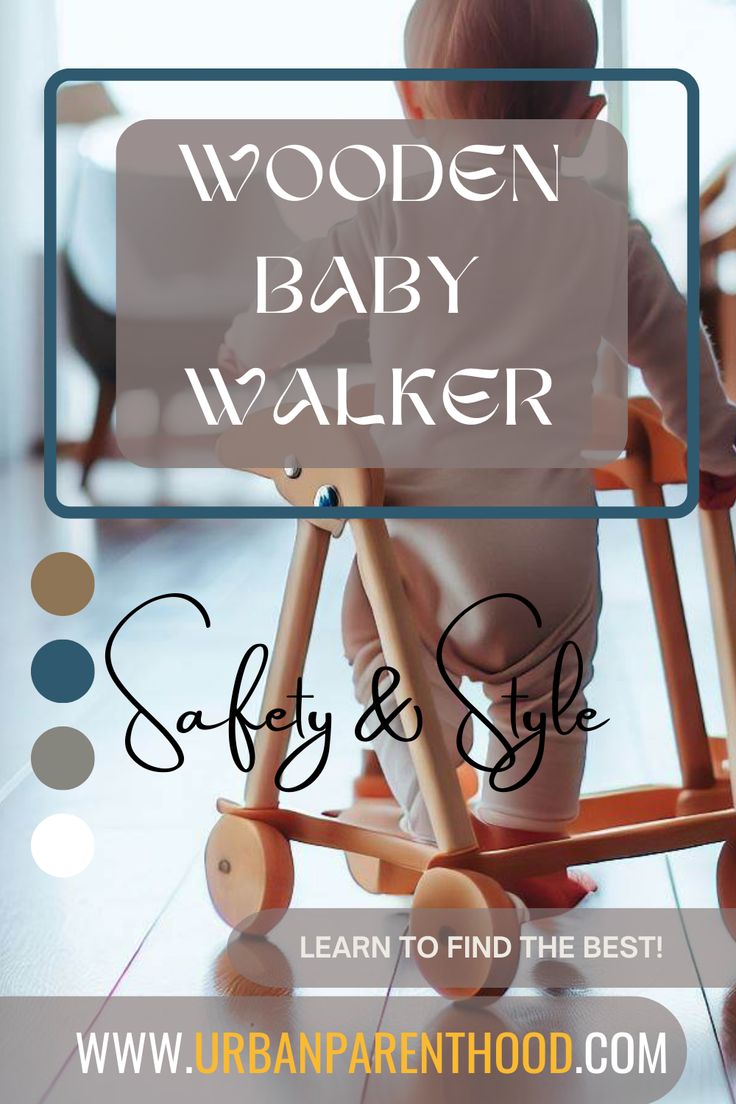
*We may earn a commission from purchases made through our links, at no cost to you. This does not affect our product recommendations. Please see our disclosure to learn more.

